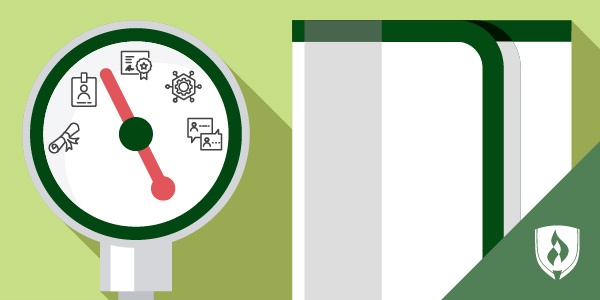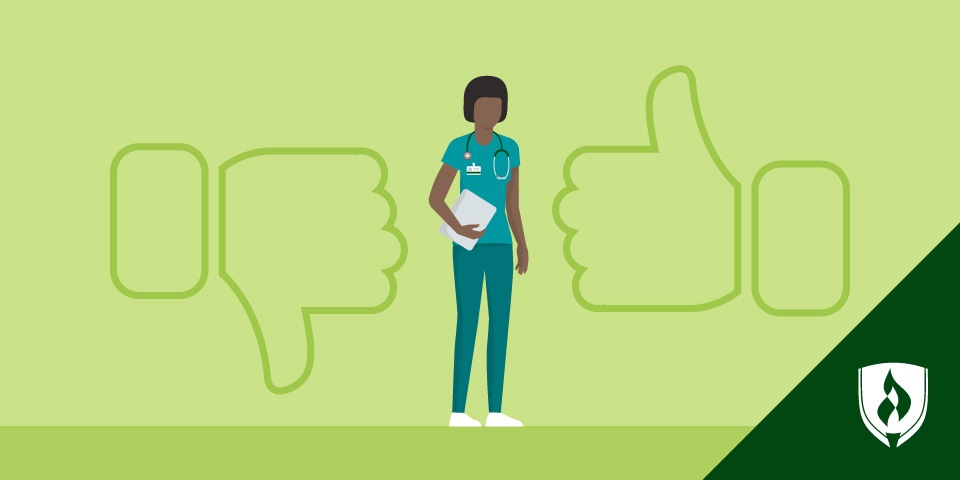
I want to be a medical assistant... but where do I start?
If you’re looking for a new direction, you may be wondering about a career as a medical assistant. You already know that by joining the fast-paced medical field, you’ll play a crucial role in helping patients and providing a great healthcare experience.
A medical assistant career could be the perfect entry point into the healthcare field you have your sights set on. But what medical assistant skills and education requirements are needed to land a position? We’ve got the answers to all your questions. But first, let’s take a quick look at some basic medical assistant career information you may be curious about. Curious how long it takes to become a medical assistant? Read more here.
Medical assistant career info you want to know
It’s no wonder you’re intrigued at the idea of pursuing this position, especially considering the optimistic career outlook. Medical assistant jobs are projected to grow more than four times the average for all occupations, according to the U.S. Bureau of Labor Statistics (BLS).1
What’s more is that the medical assistant education requirements aren’t nearly as extensive as other careers in the healthcare field. You can earn a Medical Assisting Diploma from Rasmussen University in as few as 12 months in a traditional format or as few as 6-9 months in a subscription-based competency-based education format.2 This means you could be just one year away from making an impact in the lives of patients.
The knowledge and skills gained during this training will help you meet the medical assistant qualifications needed to carry out the daily job duties. But what are those duties, exactly? Let’s take a closer look.
Common medical assistant job duties
In order to understand the medical assistant skills needed, you’ll first want to take a look at the duties they’re responsible for in a typical shift.
Medical assistants work in healthcare facilities; typically in medical clinics, with patients, doctors and nurses all vying for their time. They perform both administrative and clinical duties under the direction of a physician or registered nurse. A medical assistant career is patient-facing, with days spent interacting with individuals of all different backgrounds.
The BLS outlines a few of the duties medical assistants can expect to do, including the following1:
- Scheduling patient appointments
- Maintaining medical records, and billing and coding information for insurance
- Preparing patients for examination
- Helping physicians with patient examinations
- Taking and recording vital signs, such as blood pressure
- Drawing blood
- Preparing blood samples for laboratory tests
- Giving patients injections or medications as directed by a physician (in some states)
If you plan on becoming a medical assistant, you can anticipate spending your shifts doing these types of activities. With a combination of behind-the-scenes and front office duties to juggle, medical assistant careers require a wide range of skills. But some are more sought after than others. Keep reading to see which ones employers value most.
Medical assistant skills you’ll need to succeed
Medical assistant job requirements include a mix of clinical skills and administrative skills. Check out this video for a high-level look at what is expected of these healthcare pros.
If you’re looking for more detail about what employers are looking for in a medical assistant resume, here’s some more information for you. We used real-time job analysis software to examine more than 122,000 medical assistant job postings from the past year.3 The data helped us determine the exact medical assistant skills employers are seeking.
As we mentioned before, medical assistant skills can be broken up into clinical and administrative categories. Here’s what we found in our analysis:
Top clinical skills for medical assistants3
- Patient care
- Vital signs measurement
- Injections
- Cardiopulmonary resuscitation (CPR)
- Electrocardiogram (EKG)
- Phlebotomy
- Patient preparation
- Life support
- Medical terminology
- Patient/family education
Top administrative skills for medical assistants3
- Scheduling
- Appointment setting
- Customer service
- Electronic medical records
- Medical coding
- Patient flow
- Computer literacy
- Telephone skills
- Collaboration
- Multitasking
Start honing your medical assistant skills
After reviewing the medical assistant job requirements, you’ve likely identified some qualities and skills you already possess that make you a great fit for the field. If you’re a great communicator who enjoys multitasking and interacting with others, all you’re missing are the technical skills needed to carry out the job duties.
That’s where the medical assistant education comes into play. Completing a post-secondary program will help equip you with the technical knowledge and training you’ll need to succeed. Learn more about how the Rasmussen University Medical Assisting program can help you get started.
Related Articles:
- Where Do Medical Assistants Work? 7 Settings Beyond the Clinic
- 6 Reasons Moms Already Have the Core Characteristics of a Medical Assistant
- 7 Signs You Would Thrive in a Medical Assisting Career
EDITOR'S NOTE: This article was originally published in December 2013. It has since been updated to include information relevant to 2019.
1 Bureau of Labor Statistics, U.S. Department of Labor, Occupational Outlook Handbook, [accessed April 2019]. Information represents national, averaged data for the occupations listed and include workers at all levels of education and experience. Employment conditions in your area may vary.
2 Time to complete is dependent on accepted transfer credits and courses completed each quarter.
3 Burning-glass.com (analysis of 122,259 medical assistant job postings, Apr. 01, 2018 – Mar. 31, 2019).




